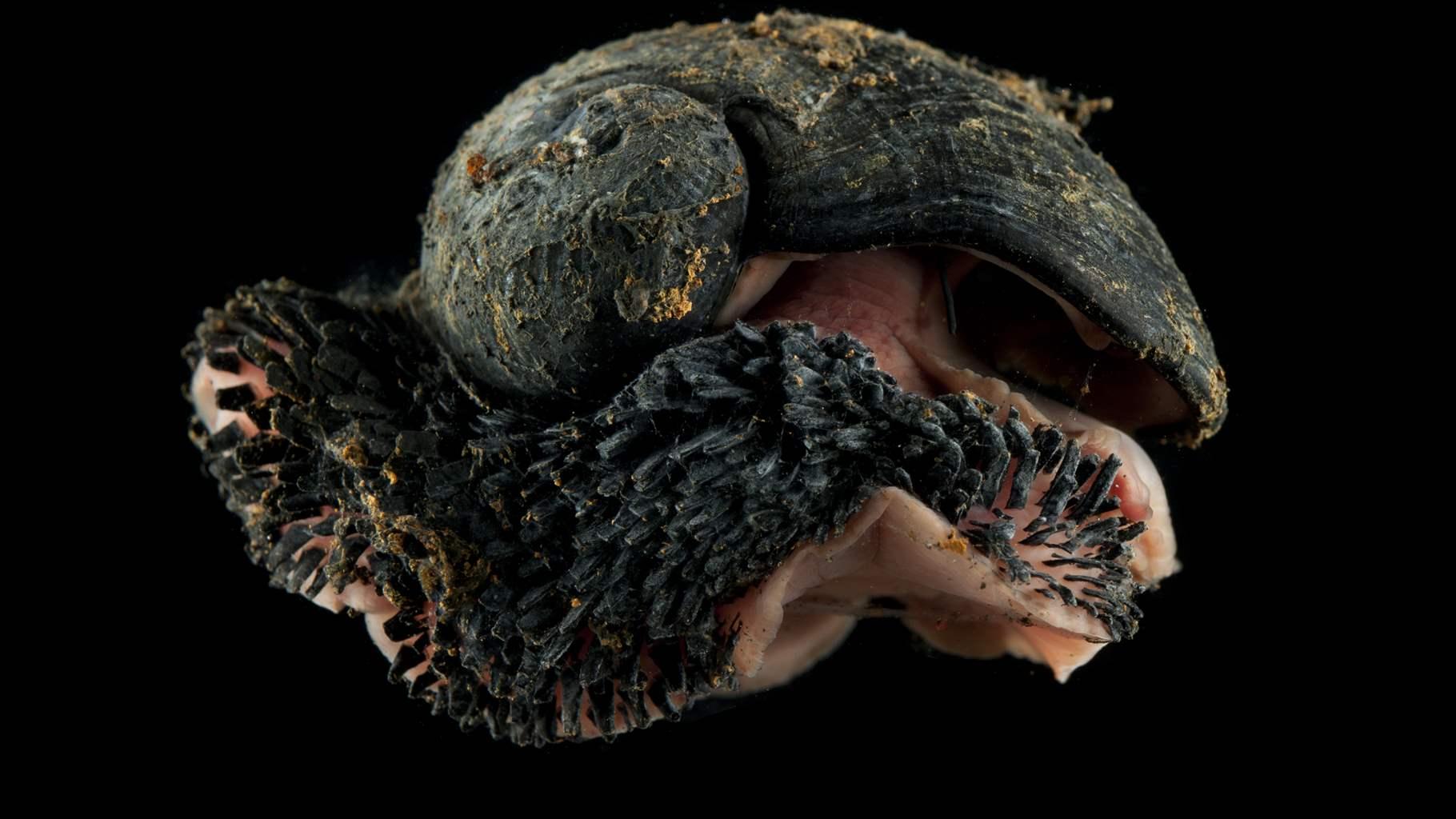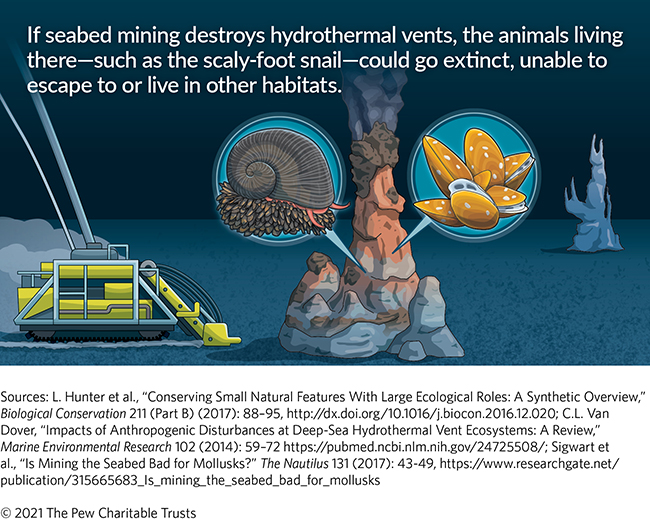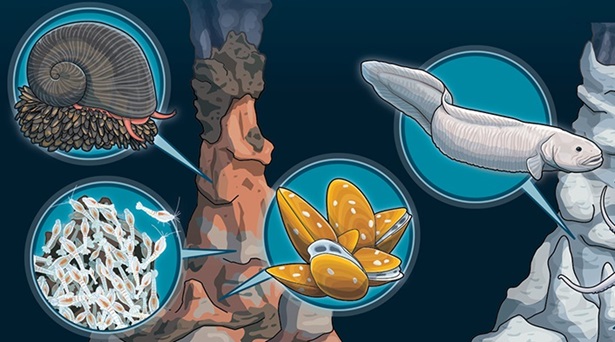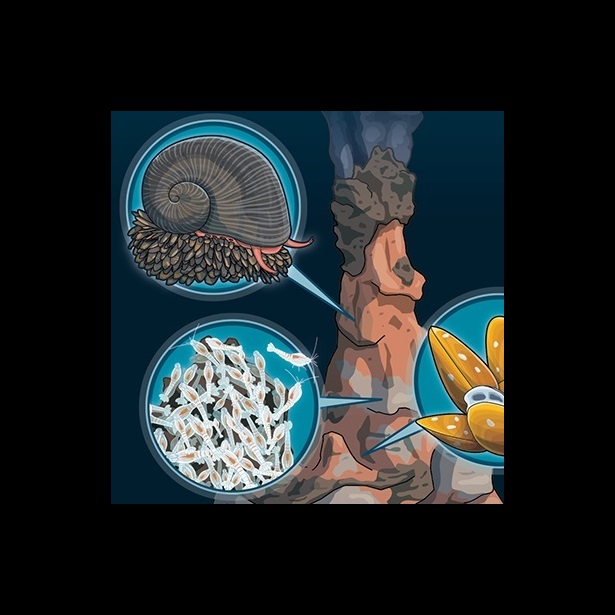Behind the Quest to Protect the Unique Life Around Deep-Sea Vents
Seabed mining could wipe out some species and wreck habitats, marine scientist says

Editor’s note: The text of this webpage was updated on Sept. 20, 2021, to clarify Julia Sigwart’s title and organization.
When the scaly-foot snail, also known as the sea pangolin, was added in 2019 to the International Union for Conservation of Nature’s (IUCN's) Red List of Threatened Species, it became the first creature declared endangered because of the threat of seabed mining.
The snail, known for its iron-plated armor, lives near hydrothermal vents on the floor of the Indian Ocean east of Madagascar—an area being explored for deep-sea mining. Miners are interested in extracting gold, zinc, cobalt and lithium from the areas around the world’s hydrothermal vents, which gush superheated, mineral-rich water from the sea floor.
Vents teem with life, including many endemic species that live nowhere else, not even in other vent fields. Some hydrothermal vent species, such as eyeless shrimp larvae, can drift on currents. However, because hydrothermal vent fields can be 1,000 kilometres from their nearest neighbor, species may not be able to travel far enough to reach another field if theirs is damaged.
To learn more, Pew spoke with deep-sea scientist Julia Sigwart, who spearheaded the effort to list the scaly-foot snail as endangered. This interview with Sigwart, professor and curator at the Senckenberg Research Institute and Natural History Museum in Germany and Queen’s University Belfast in Northern Ireland, has been edited for clarity and length.
Q: What’s it like exploring one of the least-known areas of the planet—the bottom of the ocean?
A: There is still so much about our own planet that we have never seen and are only starting to explore now. This is an era of incredible exploration, as we have new technology that helps us access the deep sea and share it with the world.
Q: Why should people care about protecting hydrothermal vents and the organisms they support?
A: Hydrothermal vents support extraordinary life. They are oases in the deep sea with species that give us unique insights into how life started on Earth, how animals have evolved, and how creatures’ adaptations to extreme environments have applications in new technology.
Q: Hydrothermal vents are some of the most extreme ecosystems in the world, with water that reaches 400°C (752°F) and is as acidic as acid rain. These harsh conditions might lead some to believe that these ecosystems could withstand anything, but science tells us that isn’t the case. Why are they so vulnerable?
A: Every species on Earth has evolved in a particular niche, and hydrothermal vent species are no different. Although they can withstand environmental conditions that seem extreme to us, they cannot live anywhere else. And vent systems are rare and also small-scale, so there are not many places that vent species can live.
Q: What impacts could seabed mining have on hydrothermal vents and the life around them?
A: Commercial-scale mining at or near an active hydrothermal vent field could be devastating to the local ecosystem, both through direct physical destruction and also plumes of sediment that would spread through the water and drift over long distances.
Q: How has the IUCN’s listing of the scaly-foot snail affected protection of other species that live around deep-sea vents?
A: The IUCN global Red List of Threatened Species is recognized around the world as an authoritative guide to the risks that species face. The scaly-foot snail was the first species to be listed as threatened by deep-sea mining, but now there are more than 100 hydrothermal vent species that have been assessed, including some that [IUCN has listed as] critically endangered. Others are listed as species of least concern, where there are marine protected areas already in place to protect them. These assessments help everyone—not just scientists—understand the risks that deep-sea mining could pose to our biodiversity.















